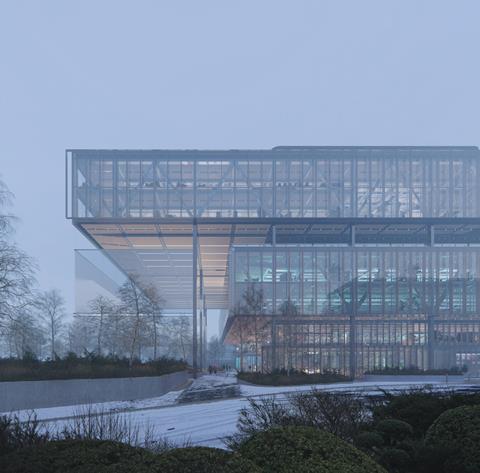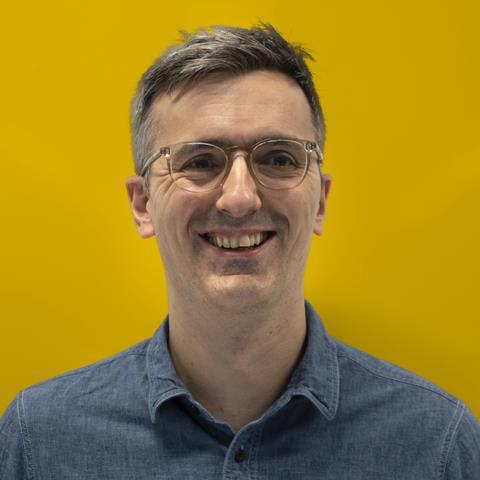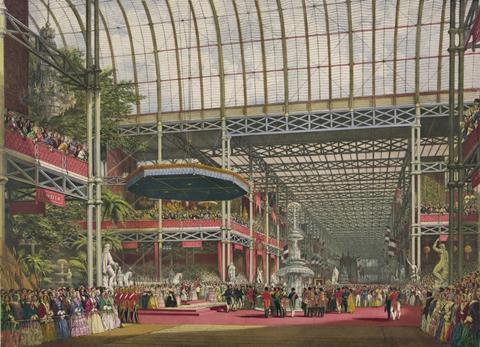The firmãs associate partner on struggling with dyslexia at school, increasing diversity in the profession, working under Graham Stirk and Ivan Harbour and watching his children play with his Lego

Why did you choose construction as a career?
Iãm not sure how I chose my career but, looking back, you can see how the dots joined together. As a child I liked science fiction, spacecrafts, model-making and drawing cartoons of cities of the future. I was also interested in politics, probably influenced by my parents who both worked for local government.
These interests combined with growing up in Lambeth, south London, in the 1980s where the city around me was in a poor state and in desperate need of a new vision. These were contributing factors to my journey to architecture.

The other and perhaps more fundamental factor was my dyslexia. I could not write my own name until I was seven years old. Writing or anything deemed academic was almost ruled out for me.
I really struggled at school, not for lack of trying and obviously this impacted my confidence and disrupted the school environment for me. I scraped through my GCSEs with four C-plus grades and went to college, where I attended an art and design course as this seemed the most natural fit. The course relied less on writing and these were two subjects I was stronger at ã art and design technology. But even on this course I was told I would be ãwasting my time applying for a degree as I wouldnãt be able to handle itã.
However I could draw, design and had a million ideas that I would communicate through drawing even if my written words made little sense. I managed to get onto an interior design degree and, for the first time in my life, got good grades. The course was taught by architects as well as interior designers and started to become focused on the architecture of buildings, structural forms and the urban context of the project. This experience encouraged me to apply for an architecture degree.
Following my parentsã lead, I always wanted to do something that would make a difference, including adding social value. Architecture exemplifies this. I love the notion of modernity as a positive benefit for the many, not the few. The architecture of RSHP is also driven by this approach.
What are you most proud of in your career to date?
Getting my first job at Richard Rogers Partnership, now RSHP, was a huge moment which my younger self could have never imaged doing such a job. Since joining RSHP, I have worked on a number of projects I am very proud of including The Leadenhall ¤ûè¨üàèºTV, Protos Winery in Spain, London School of Economicsã Centre ¤ûè¨üàèºTV, and currently a new housing scheme in Bethnal Green, London.
All of these projects have been designed under the leadership of Graham Stirk or Ivan Harbour with whom I am fortunate to have been mentored and learnt from. I am particularly proud of my most recent project ã a new business centre in Vilnius, Lithuania, for which I led the design. We won the project via an invited competition. Vilnius is a wonderful city, rich in heritage and history, so it has been a great project to lead and contribute to the design.
I am also proud of the various causes I have supported ã from teaching and mentoring with the Stephen Lawrence Trust to working with the new Design Think Tank at the London School of Architecture (LSA), as well as organising three charity bike rides across Europe.
What has been the biggest challenge of your career to date?
Architecture is a constant challenge and every project you step up in your role and responsibility. There is a technical as well as creative challenge. A massive challenge has been instigating design ã you are only as good as your last design.
If you could change one thing about the industry, what would it be?
Equality is still a great challenge for the industry. Diversity in all its forms is something we all need to improve but I am particularly interested in how we get young people from a diverse range of backgrounds into the profession. Young people from disadvantaged economic groups are still underrepresented in architecture.
At RSHP we have supported a number of programmes including the LSA placement schemes, Design Think Tanks and the new Part 0 programme which is proactively targeting issues of diversity.
What is the most helpful advice that you have been given?
At university, when I went through a difficult period, my dadãs advice was: ãdealing with success is easy, dealing with failure, thatãs hard ã but it makes you who you are todayã.
Name your favourite building in the world?
My favourite spaces are often those between buildings ã a bustling street or square with cafes. This is what I love about buildings such as the Pompidou Centre (I guess I would say that!), but I have just returned from Paris, and it was great to introduce my six-year-old to such a fun building which also exemplifies how to create a public space with the backdrop of a brilliant modern building which uplifts the entire space.
Which famous building do you most dislike?
I am not a huge fan of what I would call ãbeige buildingsã. By that I mean ones using fake brickwork, which has become more common in modern developments.
It may be driven by a desire for contextualism in so far as it references a predominate construction material but, in the case of London, some new buildings feature cladding which mimics brick. These developments are featureless with none of the character that signifies great Victorian or Georgian housebuilding, industrial architecture or civic structures they seek to reference.

Which famous building do you wish you had worked on?
Crystal Palace by Joseph Paxton. Considering it was designed in the mid-19th century, it must have looked out of this world when it was built.
What one piece of advice would you give to someone starting out in your profession?
Criticism is probably one of the hardest things to take as an architect. We are designers and, like any creative industry, our work gets criticised. When studying and in the early stage of your career it can knock your confidence.
For those starting out, I would try to embrace criticism. Do not take it personally and try to understand the point someone is making.
As architects we are always learning and on every project we should learn something new to take forward and realise what could be done better in the next project. But do also push back on criticism if you believe in what you are doing. If you believe in something passionately and work hard to ensure a professional standard, you will prevail.

Who do you most admire in the construction industry?
Norman Foster and Zaha Hadid have had an equal influence. I admire both for the modernity in their work. Foster is one of the greatest architects of the 20th century and Hadid was revelatory, from her early painting which influenced me as a student and her latter works are experiments in visions for the future unbounded by contemporary constraints.
Both also broke through career barriers, Foster from a working-class upbringing in Manchester and Hadid born in Iraq and breaking through the gender barrier. Both became pioneering figures in architecture.

What is it like being you (and doing your job)?
I have a lot of passion and drive. I love the excitement of design, albeit it can be very intense, but I like to enjoy myself at work as well as be encouraging and supportive of younger staff. I like seeing younger people step forward at work.
When you see buildings through to completion, you realise it is a privilege to be in the construction industry and making a positive impact on the city.
Do you have a life philosophy?
Not really. I struggled with confidence when I was younger and, like anyone, I have days where you need to pick yourself up. But I always try to think tomorrow will be better and, if I make mistakes, they are a way to make me better at what I do, and stay optimistic.
What do you think your best quality is?
Enthusiasm and passion. Trying to do good buildings and working with a team to do this.
What trait do you most dislike in yourself? And in other people?
My focus on work makes it a challenge to switch off when I am not working.
In other people, I really dislike aggressiveness or ego ã two traits that you can come across in the construction industry. Construction and good architecture require teamwork and I do not believe much is ever achieved for individuals or projects with a lack of kindness.
Name three things that you like
Spending time with my family, good friends and eating good food ã you do not need much else.
Tell us about a secret skill that we donãt know you have
I can moonwalk, but not sure that is a skill or a secret to people who know me.
What is your most prized possession?
I kept much of my Lego from my childhood and now my three children play with it. It is lovely to watch them, but it can be pretty stressful seeing the original models destroyed and parts scattered everywhere by my youngest, who is just over a year old.
Early bird or night owl?
Night owl, but I know an early bird is better for me!
What is your favourite food?
Anything Italian!
What would your superpower be?
Flying would be useful so I can get to work quicker ã but that is a bit obviousãÎ




























No comments yet